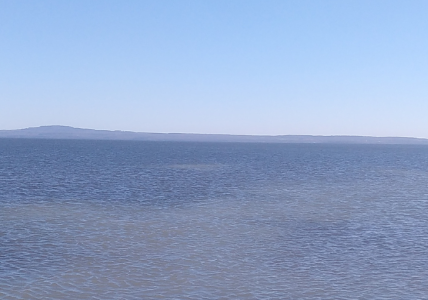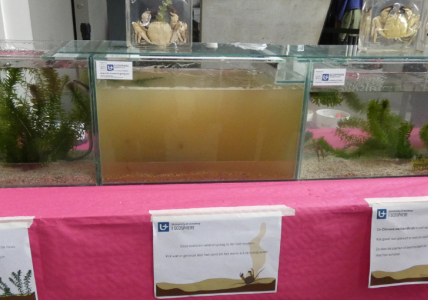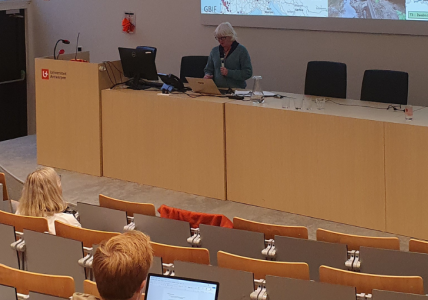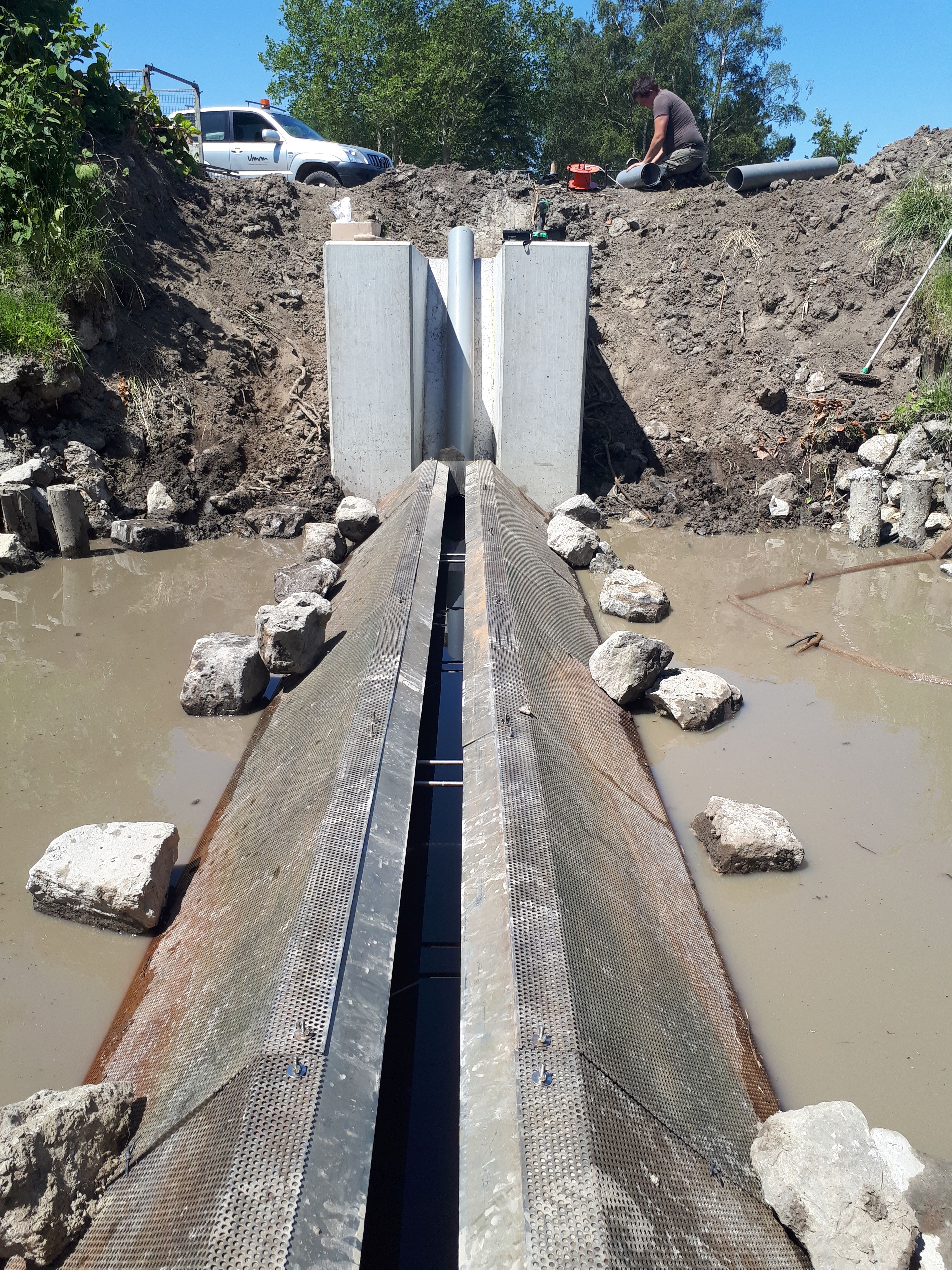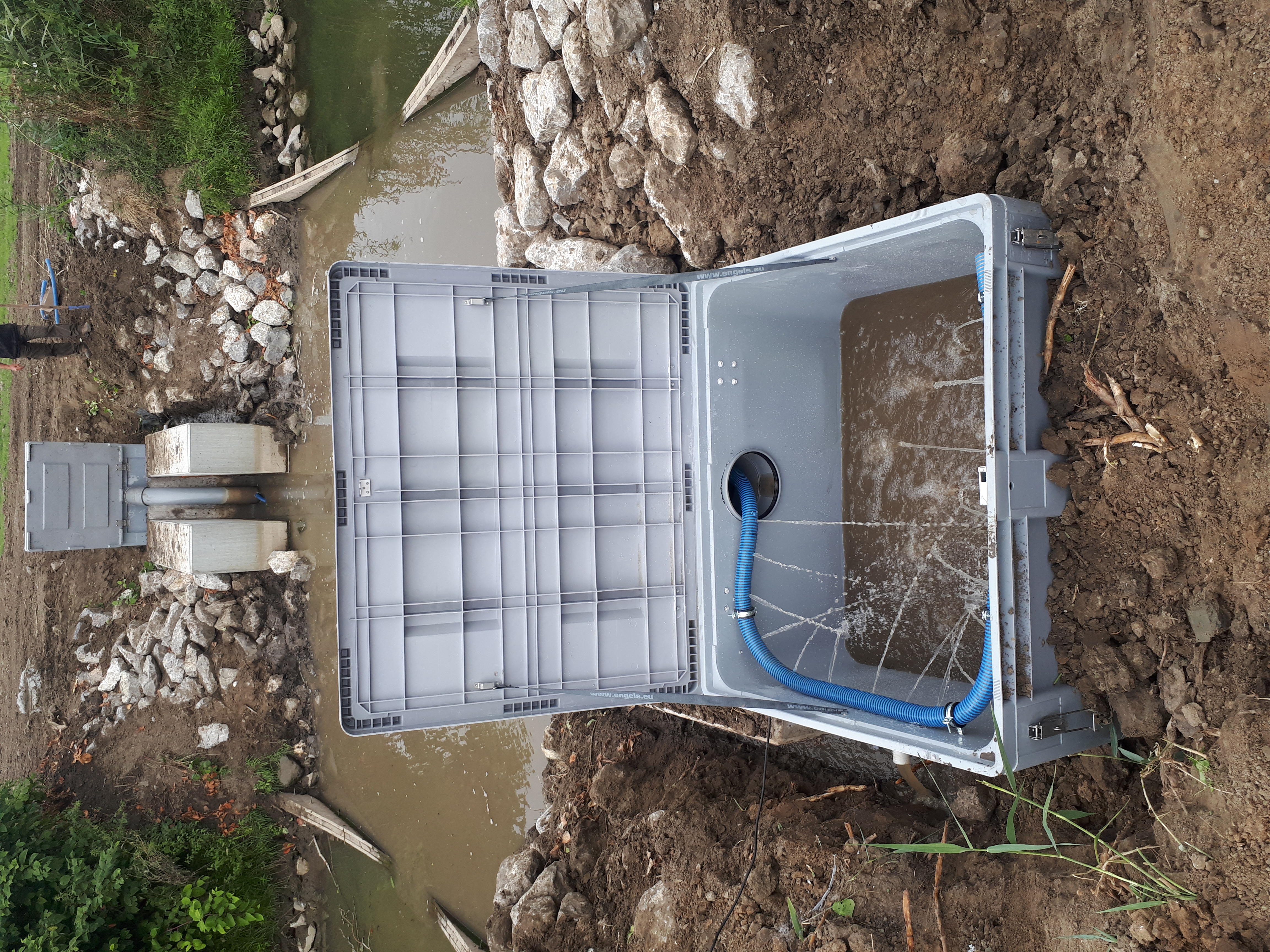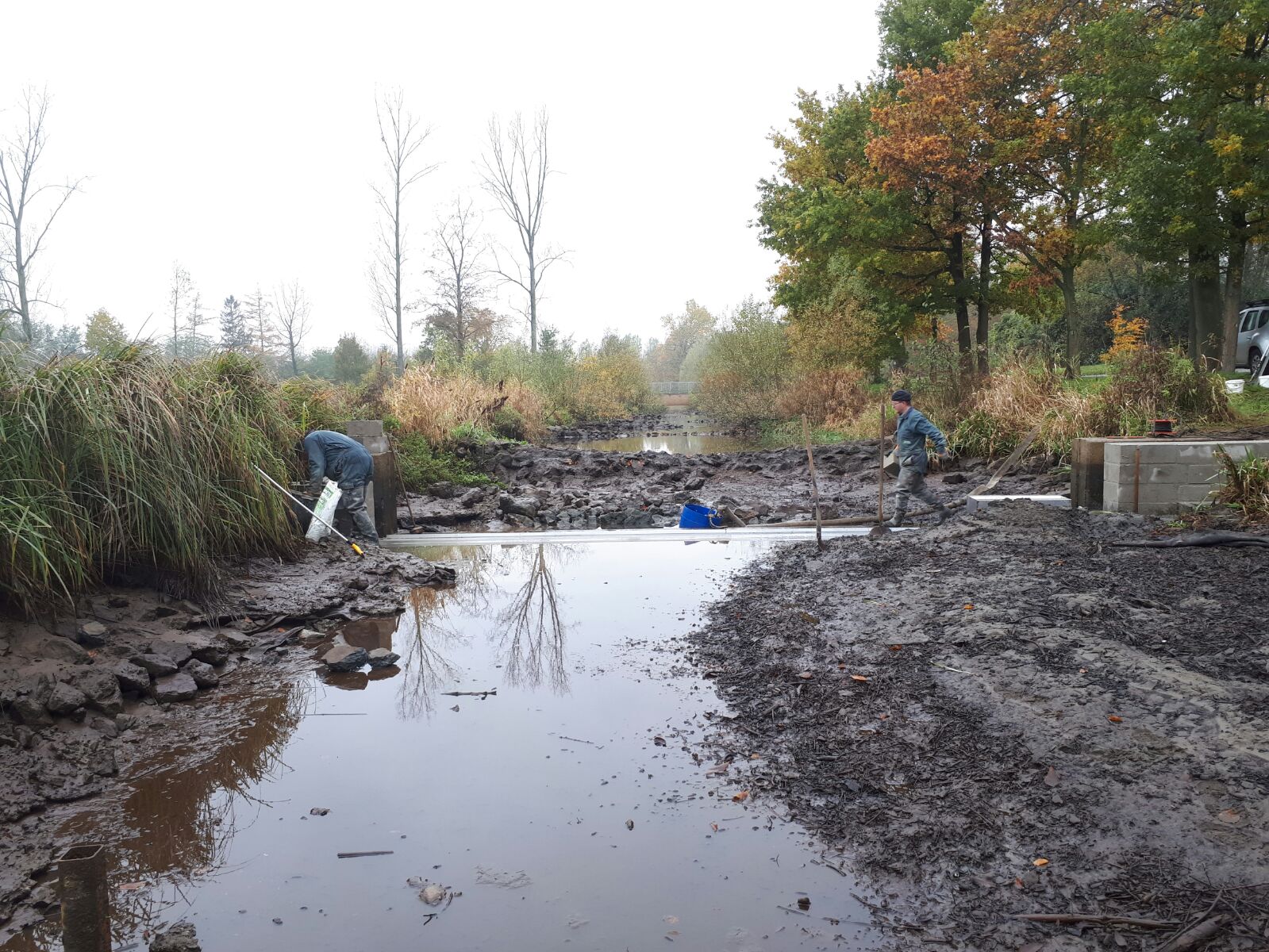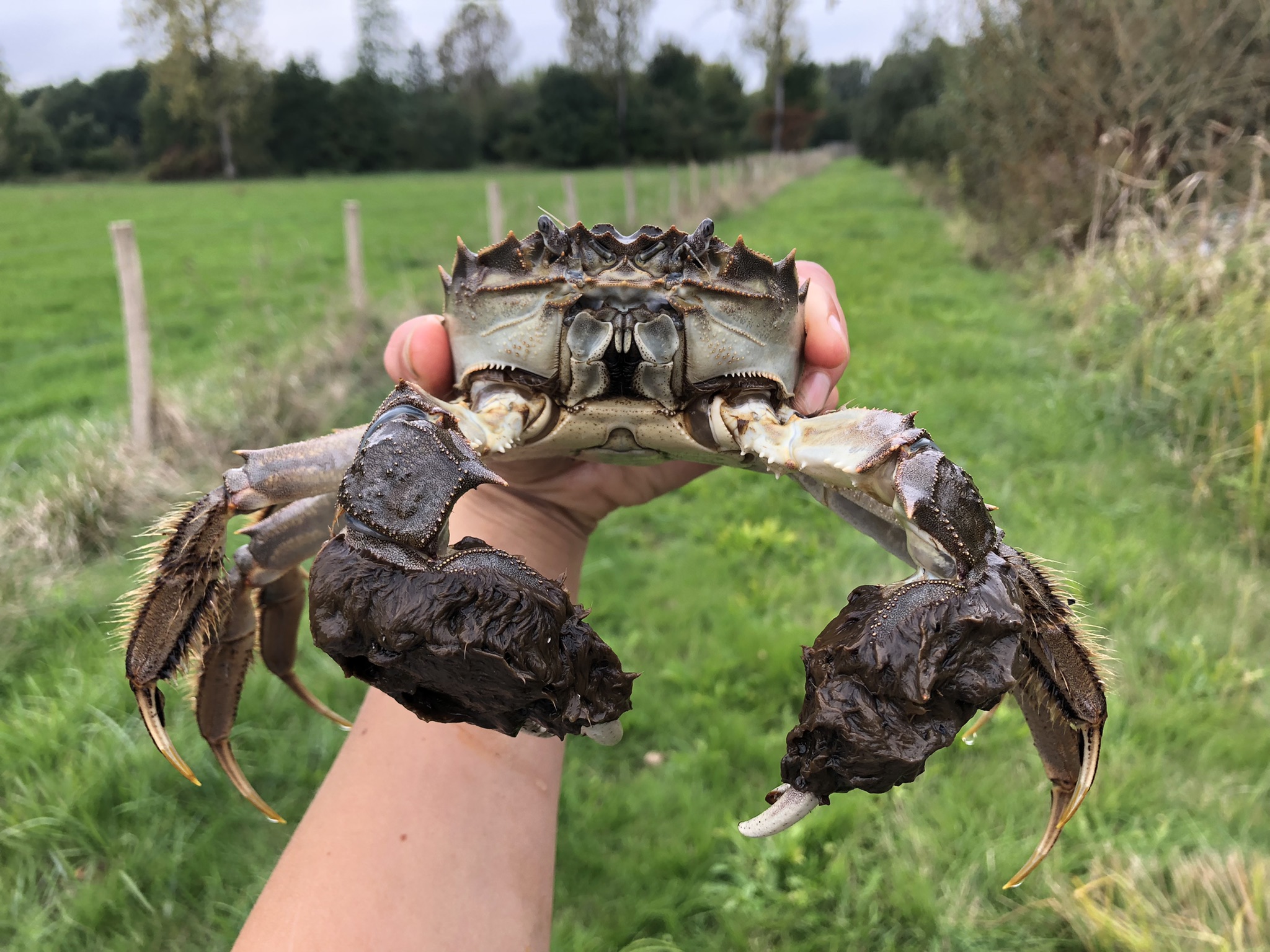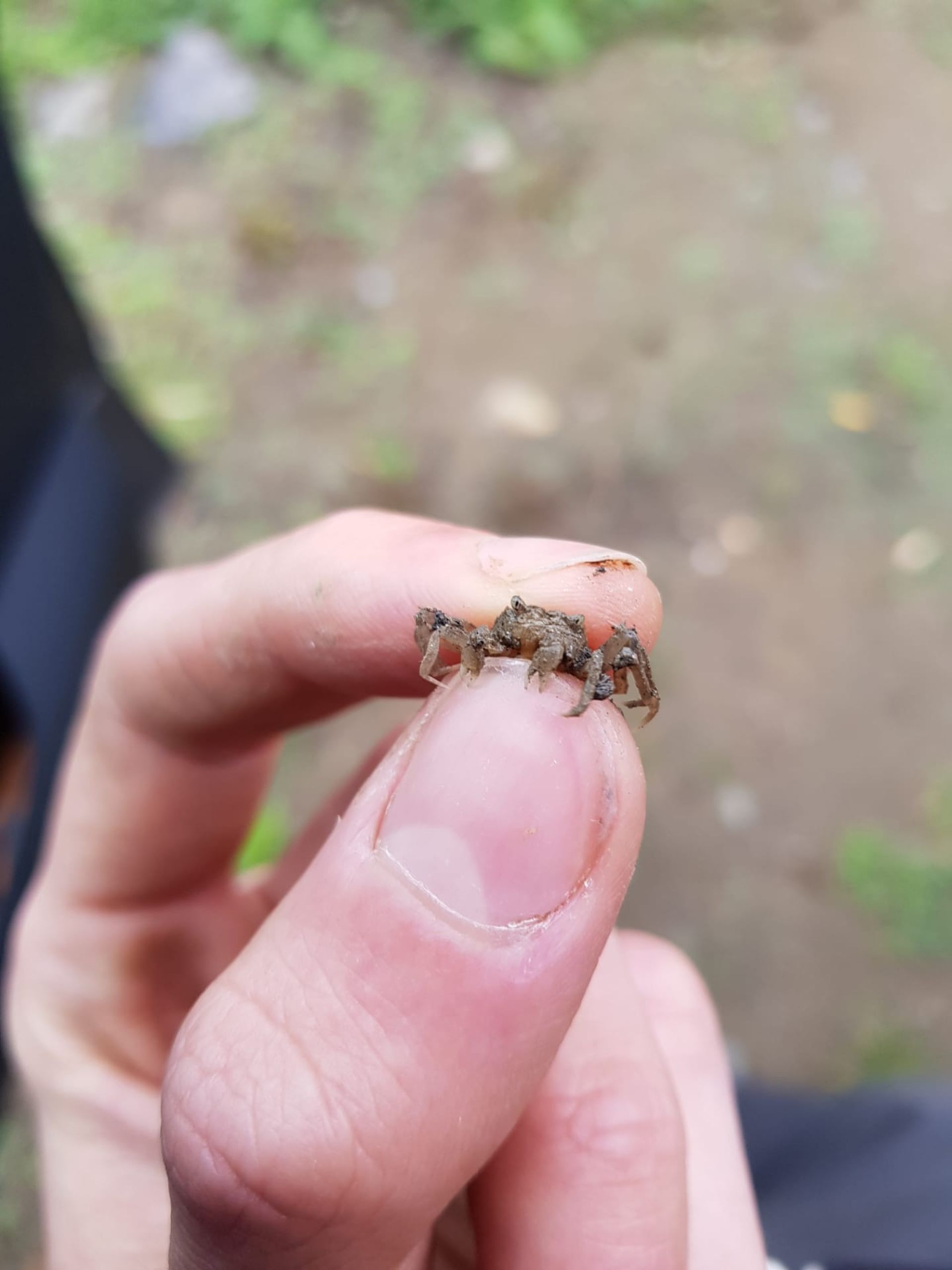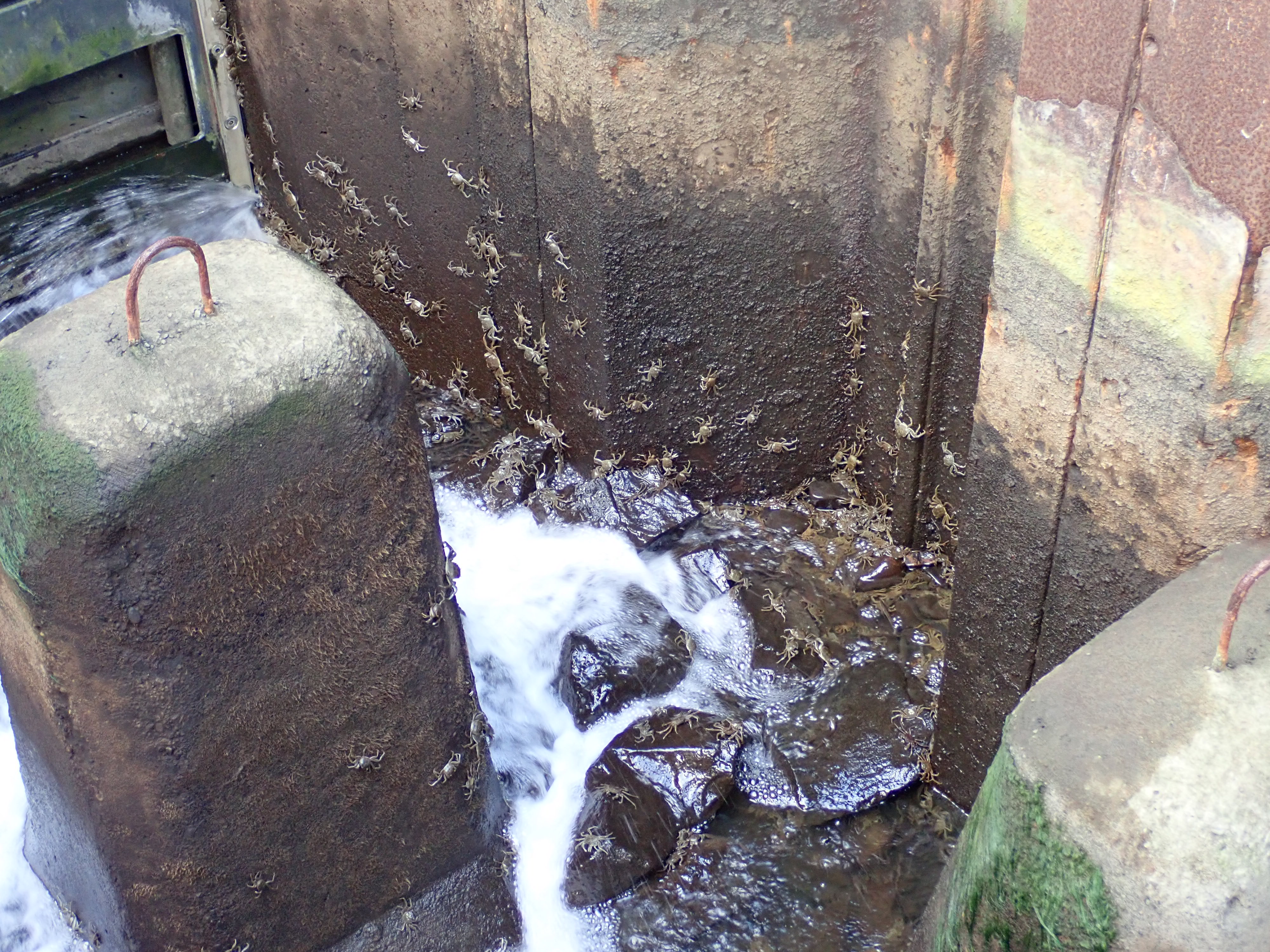Some crabs in the trap. (Photo: Heleen Keirsebelik)
About the project
The Chinese mitten crab is listed by the International Union for Conservation of Nature (IUCN) as one of the “World's 100 Worst Invasive Alien Species“.
Eight institutions from four countries (FR, BE, DE, SE) joined forces to find a strategy on a European level for a lasting and efficient reduction of this invasive species.
Juvenile crabs migrate up almost all coastal river systems in Western Europe where they spend part of their adult life before their migration back towards the North Sea for reproduction. Therefore, the mitten crabs can be caught at two different life stages and be removed in large quantities from the river systems at suitable locations using an innovative trap concept. This will significantly reduce the negative ecological impact of the mitten crabs in the river systems.
Clancy seeks to demonstrate how invasive species can successfully and efficiently be controlled at a European level. As such it is intended to help national authorities implement the EU's requirements for combating invasive species.
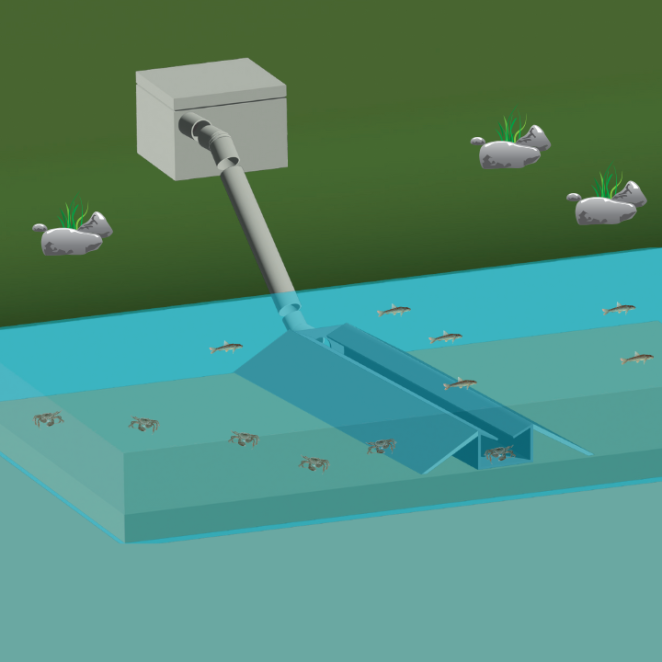
The trap
The University of Antwerp and the Flanders Environment Agency have collaboratively developed a trap concept and successfully tested it in the river Kleine Nete (Antwerp).
Within CLANCY, 5 new traps in Belgium and 5 traps in Germany will be set up to test the concept under different conditions and in different river sizes. Common crab traps will be used in different locations in Sweden and Northern France to identify spots of migration and/or migration patterns.
Overall, these traps will reveal the most suitable modifications and locations in terms of total catch and lowest maintenance costs. Over the course of five years, the effect of the traps/crab reduction will be monitored on the river ecosystems and concepts for a sensible use of the crab biomass will be developed.

